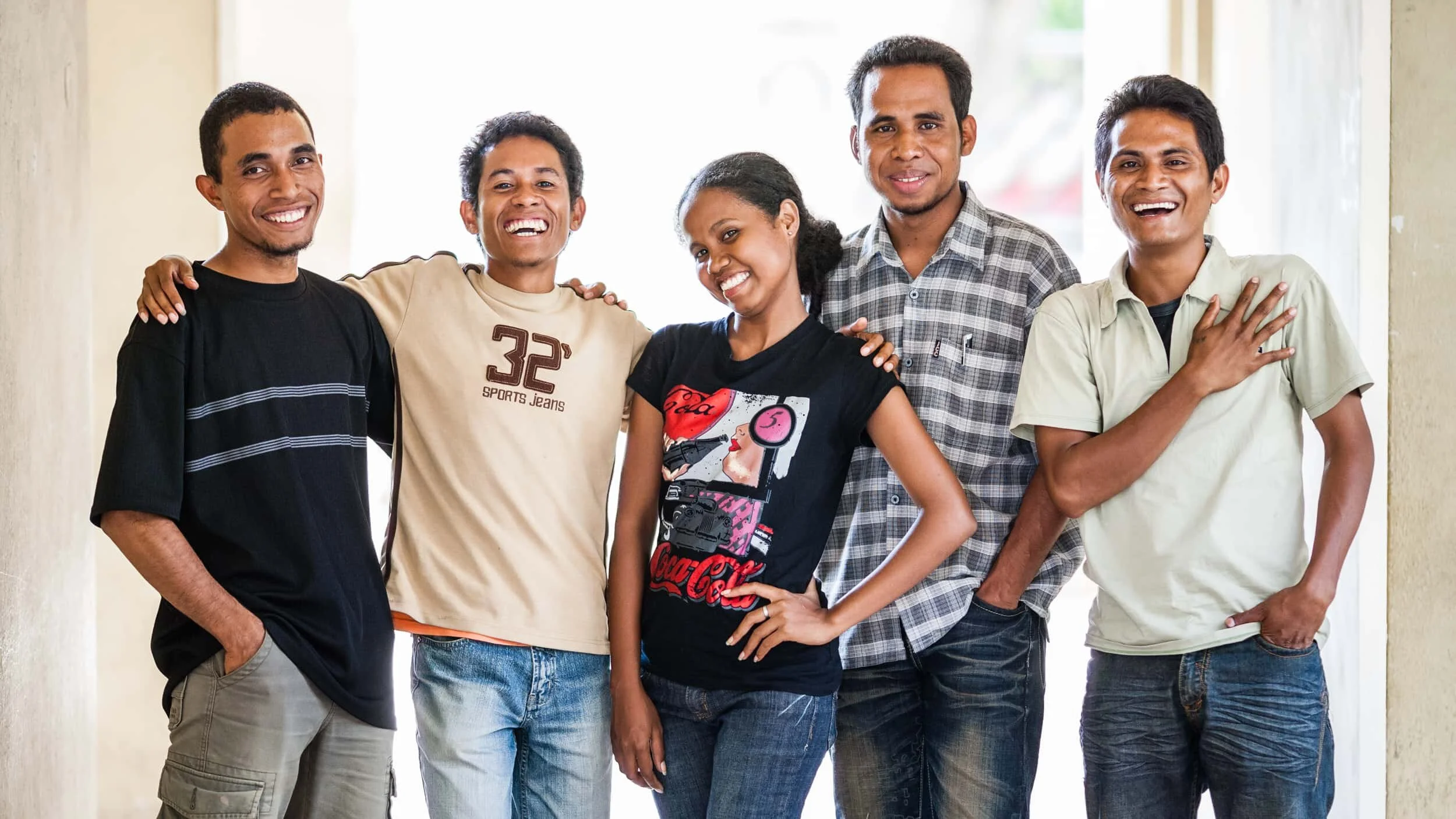
For the people of one of the world's newest and poorest nations, the legacy of East Timor's violent past merges with the daily struggle to survive. But amidst the hardship and constant tensions, there is a quiet determination to move forward in peace.
Timor-Leste (East Timor) suffered high levels of political violence during 24 years of illegal Indonesian occupation from 1975. This continued after the vote for self-determination in the 1999 referendum.
To date, many of the human rights violations outlined in the report and recommendations of the truth commission of 2005 (the 'Chega!' report) have not been addressed, either by legal means (such as an international tribunal) or by an alternative peace and reconciliation process.
This failure to deal with the violations feeds a culture of impunity. This in turn prompts outbreaks of instability, undermining the long term development of this emerging nation.
Since it gained formal independence in May 2002, Timor-Leste has achieved some growth and development despite these ongoing problems and a growing problem of corruption. But protecting and promoting human rights is essential to the future security and prosperity of this young nation and its impoverished people.
Commissioned by ProgressioEast Timor: Who Cares? was a campaign designed to increase the political profile of the reconciliation process in East Timor as part of an ongoing programme of policy work on the country. The primary aim was to engage and encourage senior international politicians to recognise the importance of the reconciliation process and give their support to it.
The photography was commissioned by Progression to support the campaign, which was launched with a major exhibition in the Houses of Parliament. Attended by senior politicians of all parties, and ministers from the foreign and development ministries, the exhibition gave Progressio the opportunity to share the policy messages on reconciliation for East Timor. Published online by the BBC, and used in the press, the pictures were also featured on campaign cards, posters and in online resources to lobby parliament on the issues.
Jelia Boavida de Jesus at home with her children. Jelia continues to search for information about her husband who went missing in 1991 - Railako, East Timor. During Indonesia’s occupation of East Timor from 1975 to 1999, thousands of people went missing and more than one hundred thousand people were known to have died.

At the height of the political violence in 2006, over 150,000 were forced to flee their homes. Sister Guilhermina Marcal helped care for some 23,000 people sheltering in the grounds of the Canossian Convent at Balide in Dili. Today, that number is still 1,400. Sister Guilhermina campaigns for all those who have been displaced by violence, saying they will never be able to return home without financial and emotional support.

A salt-worker uses a bamboo 'bucket' to carry seawater to a clay filter. This is the first step in a process to produce salt crystals, which brings whole families to the beaches each day.
A woman and her daughter who toil daily to produce salt, stop to explain their work to us. The daughter, who is tired and a little shy, hides her face. With unemployment at 50 per cent, many Timorese take on gruelling and poorly paid work to survive. Liquiçá province, East Timor.

On the streets of Dili, the East Timorese capital, a group of boys run a tyre repair shop, missing out on school. Forty per cent of the population lives on less than £1 a day, so every extra penny is vital. Dili, East Timor.
Below: Children with no school to go to play amongst abandoned houses. Half of the Timorese population is aged below 15, a legacy of years of violence. This means that young children often outnumber adults who struggle to support and educate them. Liquiçá, East Timor.

Antonio da Silva – a staunch critic of independence – lost part of his left ear when men opposed to his political views attacked him. Their prosecution stands in stark contrast to today’s lack of justice that sees many criminals go free. Dili, East Timor.
Unemployed with five children to care for, José Menezes Nunes Serrão survived an attempted beheading in April 1999 when pro-Indonesia militiamen attacked the local parish church. Today José campaigns for the Indonesian authorities to reveal the location of the unmarked mass graves of up to 200 people who died in the attack. Liquiçá, East Timor.
Below: East Timor’s soaring unemployment raises concerns that violence could return to the streets as disaffection grows. With an estimated 80 per cent of young Timorese finishing school without any job prospects, most now expect to leave their troubled nation in search of work abroad. Dili, East Timor.

Above: Elsa Pinto in her makeshift home in one of Dili’s many displacement camps; and below with her fellow activists for peace and reconciliation at UNTL, University of East Timor. Left to right: Gaspar Pereira (22), Luzinho Martins (20), Elsa Araújo Pinto (22), Roberto Jerónimo Cristovao (27), Ardino Soares Martins (21).
Acknowledgments
Jo Barrett, Brie O'Keefe, Keith Ewing, Fernanda Borges, Elsa Pinto, and the partners and activists in East Timor. Special thanks to the families and communities who shared their stories with us.
“The quality of the images taken by Marcus made a strong impression on the senior politicians who viewed them during the campaign, were the focus of a major parliamentary event, and were also the hook for significant media coverage. They undoubtedly meant that our campaign had a reach and influence which would otherwise simply not have happened.”





